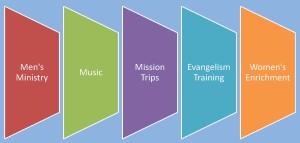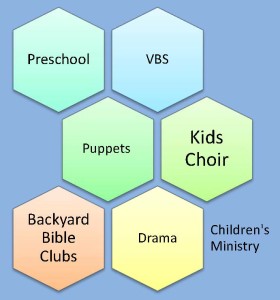by Carol
Be careful when you describe something as “medium.” The Big Thompson River in Colorado is sort of a medium river. It flows steadily throughout the year, swollen with mountain runoff in the spring and showing its rocky foundations in the summer heat. I remember the canyon as a tourist attraction, with its old-fashioned motels and comfortable little cabins along the banks.
But one Saturday evening in 1976, the river turned into the most deadly flood in Colorado history, killing 143 people and injuring 150 more. (See http://content-static.coloradoan.com/news/thompson/)
We’ve said that volunteers in the medium church (101-350 attendance in worship) tend to be steady, tolerant, numerically challenged, good (or great), contented volunteers who make competent leaders. Like the Big Thompson River, the medium church can be a peaceful destination for fishermen or unimaginable power (destructive or positive) ready to be unleashed. What makes the difference?
Think about the relationship between volunteers and the church staff (the paid kind). Two words come immediately to mind: vision and equipping.
Vision
In Part 1, we mentioned that volunteers need to be challenged. Volunteers can keep on doing whatever they’ve been doing, whether it’s good for the church or not. The paid staff needs to have the time and theological training to explore what the congregation ought to be doing. Then the pastor and staff need to communicate these things to the members. It’s called vision casting, and it should happen in any size church.
Equipping
The other important thing that the pastor and staff need to do is to equip volunteers. This includes spiritual growth, training, and managing “stuff” for them.
In the medium-sized church, “stuff” is where it gets tricky. As soon as you start adding staff members, the pastor and staff have the opportunity to communicate on a day to day basis and get things done while the volunteers are not around. Some things that volunteers were doing (or not doing) are done by staff without the input or participation of volunteers.
Let’s give a simplistic example:
The pastor sees a certain staff member every day, so the pastor asks the staff member to check the supplies in the children’s area. The staff member sees a large tub of broken crayons. The staff member assumes that the volunteers are not making good use of their limited storage space, so she throws them away. The volunteers come in the next Sunday night to find that the crayons they had expected to melt down for an art project are gone. Ouch.
“Stuff” can also be dates on the calendar, equipment in the rooms, decorations on the walls, and on and on. In the small church, the pastor doesn’t have time to look at crayons. In the large, staff-driven church, the staff manages the materials and a whole lot of other stuff. Between the two extremes, though, the staff and volunteers have differing expectations. Let’s just say that, without really good communication, volunteers can be blindsided and caught off-guard — with very unhappy results. It’s just human.
The Big Thompson flood was caused by an unusual weather pattern over the canyon. The flash flood caught up trees and boulders. But it was much more deadly because the rising waters also picked up cars, propane tanks, cabins, and even entire bridges along the way as the water came down the narrow canyon. Human stuff.
Bottom line: Don’t let human “stuff” destroy the dedication of volunteers in the medium church. Clear the debris and keep the channels of communication flowing freely.


